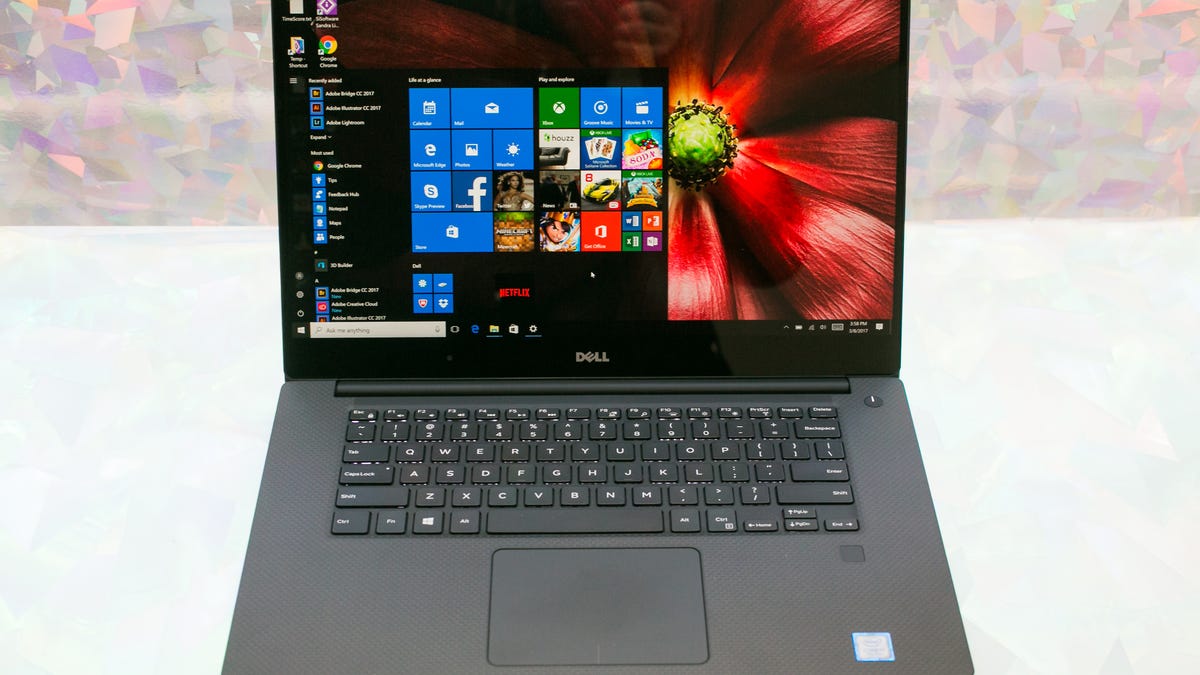Five reasons to get a 4K laptop and one big reason to stay away
Having a 4K-resolution laptop display is still partly marketing hype, but there is value in those additional pixels. Here's why.

Ever since 4K-resolution screens started showing up on laptops in 2014, their value has been up for debate. At the time there wasn't much benefit outside of photo editing, with little 4K content available and software that couldn't scale properly for the increased resolution. And then there are the increased hardware demands to play games or video at 4K, so you weren't just paying for a nice screen, but pricier components.
Much of that has changed, as prices have come down some, content is now readily available on YouTube, Netflix and elsewhere and scaling support has improved. Still, there are plenty of skeptics out there who aren't buying into the push for more pixels on a laptop. If you're one of them, here's our list of reasons to consider going 4K on your next notebook along with one major drawback.
Gaming on the 17-inch HP Omen looks great thanks to an Nvidia GeForce GTX 1070 GPU driving its 3,840x2,160-pixel display.
More detailed gaming
There are a lot more games that fully support 4K play now than there were in 2014. Although you'll still need a powerful laptop to play them smoothly at that resolution with detail settings on high, you'll be rewarded with a great immersive viewing experience. Will you miss much by playing at full HD? Probably not, but that doesn't make the sharper fine details when playing at 4K any less awesome (or help your fear of missing out).
Clarity
I have yet to come across a current 4K laptop that didn't make everyday tasks look great. All those extra pixels make for some sharper, smoother text and graphics. Plus, because most major applications' interfaces can scale these days without looking like garbage, you're actually able to enjoy having the increased resolution. On larger laptop screens, the higher resolution also means more room for software user interfaces.
Photo and video editing
Accurate color and color gamut support are more crucial for retouching, but having a 4K display for photo editing is important for examining the fine details of high-resolution images. However, while 4K resolution is a starting point, you'll want to look for the display's pixel density: The higher it is, the more detail you'll be able to see.
Back in 2014, most consumers didn't have access to a camera that recorded in 4K. Now, most premium smartphones can do it along with dSLR and interchangeable lens cameras and even smaller video cameras like GoPros. And if you're going to shoot in 4K, you might want to actually view the content at that resolution.
It's also worth mentioning that if you're doing CAD or other engineering-type stuff or illustration, the extra pixels are important for those, too.
Dell's 2017 XPS 15 has a 4K touchscreen with hardware calibration support, 100 percent Adobe RGB and most of the DCI-P3 coverage and excellent accuracy.
It's part of the premium package
Maybe it's because you want a touchscreen, the most powerful graphics, a processor or other features that will give you some future-proofing or maybe it's just the design you're after. Whatever the reason, sometimes the only way to get what you want is to get a premium build, and "premium" these days typically means a 4K display. Something like Razer's Blade Pro, for instance, has a great design and top-notch graphics, but you can only get it with a 3,840x2,160-pixel touchscreen.
Bragging rights
OK, this plays into the marketing of high-res laptop screens some, but an amazing high-resolution display can be something that's simply nice to have. I'm not saying you should stop everyone and make them bask in the glory of all your pixels. But if someone notices the clarity of your picture or appreciates the sharpness of your spreadsheets, there's no reason to shy away from pointing out it's 4K.
None of this matters if your battery is dead
The 13-inch HP Spectre x360 has a great-looking 4K display, but it's rated at half the battery life of the full HD version.
The biggest reason to skip a 4K display is battery life. It's unlikely you'll be doing any gaming or photo editing for long on battery alone with any laptop. But the higher-resolution panels put a hurt on battery life. And I'm not talking minutes, but hours in reduced run time.
For example, Dell's XPS 13 outfitted with its QHD touchscreen lasts for just about 8 hours in our tests. Get the full HD display instead, though, and you're able to get more than 10.5 hours of battery life. It's the same for the HP Spectre x360, which is rated at 8 hours for the 4K version, but 16 hours with a full HD screen.
There is also cost to consider. There are many more 4K panels available now than there were in 2014. While that's driven the price down some, 4K laptops still come at a premium. For most people, a full HD laptop screen offers the best balance between clarity, power and price.

